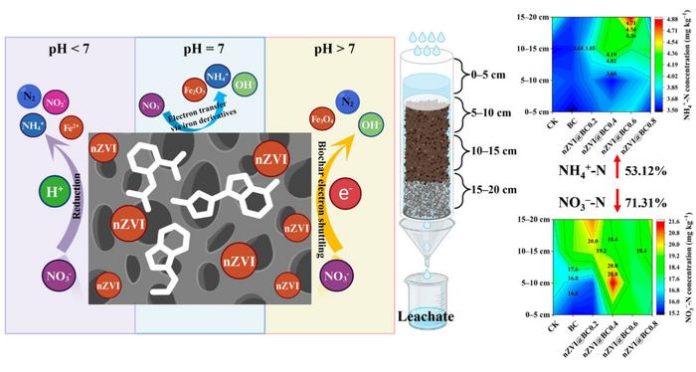
Researchers in China have developed an advanced biochar composite enhanced with nanoscale zero-valent iron (nZVI) that dramatically improves the removal of harmful nitrate nitrogen from agricultural soils and water, promising sustainable farming and environmental protection
Researchers from the Chinese Academy of Agricultural Sciences have engineered a biochar-based material that promises to revolutionise the fight against widespread nitrate pollution in agriculture. The innovation, detailed in the journal Biochar, involves enhancing ordinary biochar—a charcoal-like substance made from plant waste—with nanoscale zero-valent iron (nZVI) to create a powerful, dual-action composite.
The new material, developed by a team led by Dr Lan Luo of the Chinese Academy of Agricultural Sciences, offers a sustainable and highly effective method for cleaning up farm soils and protecting water sources from excess fertiliser runoff.
The challenge of nitrogen leaching
Agricultural runoff containing high concentrations of nitrogen from synthetic fertilisers is a critical environmental challenge globally. The excessive nitrogen transforms into nitrates, which easily seep out of farm fields, contaminating groundwater and contributing to the eutrophication of surface waterways. This contamination not only poses risks to human health (e.g., “blue baby syndrome”) but also diminishes soil quality and reduces the overall efficiency of fertiliser use. Traditional pollution control measures have struggled to provide consistent, effective results under real-world farming conditions.
Synergistic solution: Biochar meets nanotech
The new study demonstrates a synergistic solution by combining the natural benefits of biochar with the advanced reactivity of nZVI. Biochar, derived affordably from materials like corn stover, naturally acts as a porous adsorbent, soaking up nitrogen compounds like a sponge.
The addition of nZVI drastically boosts this capability. The nanoscale iron particles facilitate powerful chemical reduction reactions, which not only trap the nitrate but also actively convert it into less harmful substances. This dual mechanism—adsorption and chemical conversion—marks a significant step up from standard biochar treatments.
Impressive field performance and economic potential
Experimental trials confirmed the composite’s superior performance. The optimal formulation, labelled nZVIBC0.6, achieved a staggering 71 per cent reduction in nitrate loss and boosted the retention of beneficial ammonium nitrogen by 53 per cent compared to biochar used alone. These improvements were particularly significant in deeper soil layers, where nutrient retention is crucial for minimising environmental leakage and maximising crop productivity.
Crucially for farmers, the composite utilises low-cost modification methods and readily available agricultural waste as its base, suggesting a strong economic potential for large-scale adoption.
While further large-scale, long-term field studies are needed to fine-tune the technology for diverse soil types and climates, Dr Luo and her colleagues are optimistic. This breakthrough offers a concrete, affordable path toward improved nitrogen use efficiency—meaning higher yields for farmers with reduced fertiliser input—ultimately leading to cleaner water and more resilient, sustainable agricultural systems.










